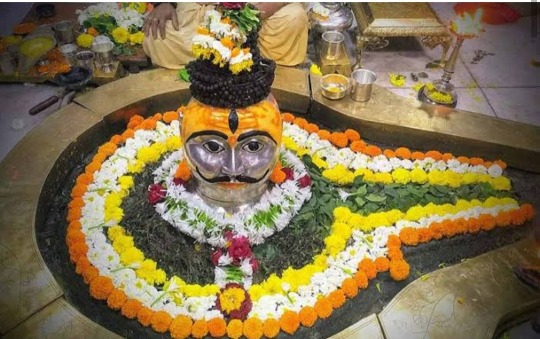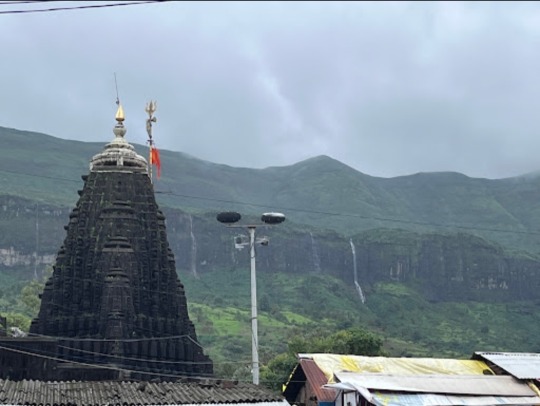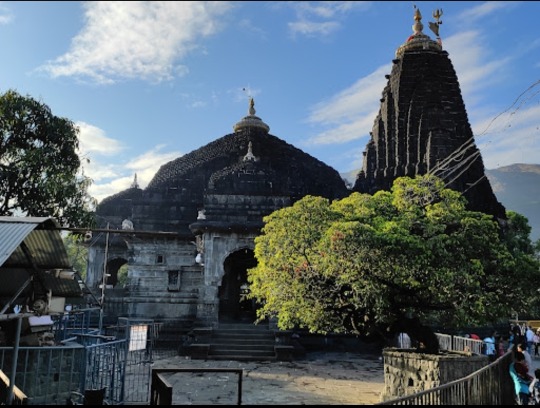Don't wanna be here? Send us removal request.
Text
Angkor Wat is an architectural masterpiece and the largest religious monument in the world – covering an area four times the size of Vatican City. It was built by the Khmer King Suryavarman II in the first half of the 12th century, around the year 1110-1150, making Angkor Wat almost 900 years old.
The temple complex, built in the capital of the Khmer Empire, took approximately 30 years to build. It was originally dedicated to the Hindu god Vishnu before becoming a Buddhist temple by the end of the 12th century.
One of the first Western visitors to the temple was Antonio de Madalena, a Portuguese friar who visited in 1586. Angkor Wat was then effectively rediscovered by the French explorer Henri Mouhot in the 1840s. Mouhot described Angkor Wat as “grander than anything left to us by Greece or Rome” and spread the word about this incredible monument to the western world.
The French, who ruled Cambodia for much of the 20th century, restored the site in the early 1900s for tourism purposes. However, this work was then disrupted by the Cambodian Civil War and during the rule of the Khmer Rouge. Angkor Wat sustained minimal damage – however there are still bullet holes on its outer walls due to the battles of the Khmer Rouge regime.




#hindu art#hindu astrology#hindu calendar#hindu mythology#hindu panchang#hindudharma#mahabharata#paubha#ramayana#vedic astrology
4 notes
·
View notes
Text
TRIMBAKESHWAR
Trimbakeshwar town is an ancient Hindu Pilgrim centre located at the source of the Godavari River, the longest river in peninsular India. Trimbakeshwar is abode of one of the twelve Jyotirlingas. The extraordinary feature of the Jyotirlinga located here is the Linga in the temple is in the form of a three faced embodying Tridev, Lord Brahma, Lord Vishnu and Lord Shiva.
The present Trimbakeshwar temple was constructed by third Peshwa Balaji Bajirao (1740-1760) on the site of an old temple. There are entry gates on all the four sides, viz. East, West, South and North. As per spiritual conceptions the direction East denotes the beginning, West denotes maturity, south denotes fulfillment or completion and the North stands for the revelation.
In the year 1954 the Sansthan was registered under public trust registration act. Shri Trimbakeshwar Sansthan takes care of daily three time pooja, all the festivals and gala carnivals of the year.




#hindu art#hindu astrology#hindu calendar#hindu mythology#hindu panchang#hindudharma#mahabharata#paubha#ramayana#vedic astrology
9 notes
·
View notes
Text
The Muktinath Temple is the place to attain Salvation or Nirvana. Besides natural fire representing Brahma and the holy waters, people also worship lord Vishnu at Muktinath Mandir in the form of ammonites (shilas) known as Salagrama Shilas. You will find many folks on how Vishnu turned to stone and how everything is related to the holy Kali Gandaki River, also known as Salagrama.
Another Hindu idol connected to Muktinath Temple is Swaminarayan- the creator of Sabij Yoga- which shares the goal of realization and service towards God. At the Muktinath Temple location, Swaminarayan practiced severe penance for two-and-a-half months. This penance helped him to attain the ultimate degree of dexterity. Here you will find small monuments dedicated to him and a place where thousands of pilgrims, followers of both Hinduism and Buddhism, flock every year to witness and connect with the mystic of this place. A local nun manages is said to manage all the prayers of the temple.



#hindu art#hindu astrology#hindu calendar#hindu mythology#hindu panchang#hindudharma#mahabharata#paubha#ramayana#vedic astrology#sanatan#lord bishnu
2 notes
·
View notes
Text
Chintpurni is a major pilgrimage Centre and one of the Shakti Peethas in India. The Chintpurni shakti peeth (Chhinnamastik shakti peeth) is located in Una district Himachal Pradesh state, surrounded by the western Himalaya in the north and east in the smaller Shiwalik (or Shivalik) range bordering the state of Punjab. The Chintpurni Shakti Peeth houses the temple of Chinnamastika Devi or Chinnamasta Devi. Chhinnamasta or Chinnamastika temple is one of the 7 major and 51 total Shakti Peethas. Here, Chhinnamasta is interpreted as the severed-headed one as well as the foreheaded-one. The Hindu genealogy registers at Chintpurni, Himachal Pradesh are kept here.The Chinna Mastika Devi is a divine embodiment of self-sacrifice and there by the Chintpurni shri is considered as a Shakti Peetha. The mythology of Daksha yaga and Sati’s self immolation is the mythology liked to the Shakti Peethas. Shakti Peethas are holy shrines of Shakti associated with a mythology that says about the falling of body parts of the corpse of Sati Devi, when Lord Shiva carried it and wandered in sorrow. There are 51 Shakti Peeth associated with the 51 alphabets in Sanskrit. It is believed that Sati Devi’s feet fell here in this place.




#hindu art#hindu astrology#hindu calendar#hindu mythology#hindu panchang#hindudharma#mahabharata#paubha#ramayana#vedic astrology
3 notes
·
View notes
Text
Biraja Temple or Viraja Kshetra , is one of the ancient Hindu temples located in the Jajpur district of Odisha, India. This present temple was built in 13th century. It is situated in the Jajpur township which is nearly 125 KM north from Bhubaneswar. The main idol is Devi Durga who is worshiped by the name Viraja.The idol is having two hands, in one hand she pierces the chest of Mahishasura with a spear and in other hand she pulls the tail of the Mahishasura.The Durga idol is standing on Lion in one leg and other leg is on Mahishasura chest.The Mahishasura is depicted as a Buffalo, not as regular human demon.The crown of Devi has symbol of Ganesha, Crescent moon and a Shivalinga.The temple covers a large area, and it has several Shiva linga and other deities. Jajpur is also known as Viraja Kshetra or Biraja Peetha.According to Skanda Purana,utkala khanda it washes all rajo guna of pilgrims. So called as Viraja or Biraja kshetra.The accommodation facility can be availed at Jajpur Road by hiring Hotels and Lodges. For financial purpose, the nearest bank located to this tourist place is S.B.I and a few nationalized banks which are located at Jajpur town. The common languages spoken in the area are Odia, Hindi and English. Head Quarter hospital Jajpur is nearer to the spot for accessing medical facilities. People wear light cotton in summer and woolen in winter.



2 notes
·
View notes
Text
Nageshwar was believed to be known as ‘Darukavana’, which is an ancient epic name of a forest in India. Below are well-known legends attached to this mystical temple.
According to the legend, ‘Balakhilyas’, a group of dwarf sages worshipped Lord Shiva in Darukavana for long a time. To test their devotion and patience, Shiva came to them as a nude ascetic wearing only nagas (serpants) on his body. Wives of sages got attracted to the saint and went after him, leaving their husbands behind. Sages got very disturbed and outraged by this.They lost their patience and cursed the ascetic to loose his linga (one of the limited meanings is Phallus, but it has has a deeper theistic symbolism). Shiva linga fell on the earth and the whole world trembled. Lord Brahma and Lord Vishnu came to Lord Shiva, requesting him to save the earth from destruction and take back his linga. Shiva consoled them and took back his linga. (From Vamana Purana CH.6th & 45th). Lord Shiva promised his divine presence in Darukavana as ‘jyothirlinga’ for ever.



#hindu art#hindu astrology#hindu calendar#hindu mythology#hindu panchang#hindudharma#mahabharata#paubha#ramayana#vedic astrology
1 note
·
View note
Text
After Sati’s self-immolation, when Shiva began the dance of destruction across the universe, Lord Vishnu had hurled his Sudarshan Chakra at the burnt corpse. Various parts of Sati’s body had fallen in different parts of the Indian subcontinent. It is said that Sati’s left anklet had fallen in Bhabanipur, although there are various conflicting theories and sources which say that it wasn’t her left anklet but her right eye or the ribs of the left side of her chest. Because of its status as a Shakti Peeth, Bhabanipur has been an important site for Hindu pilgrims, irrespective of the sect.



#hindu art#hindu astrology#hindu calendar#hindu mythology#hindu panchang#hindudharma#mahabharata#paubha#ramayana#vedic astrology#hindu in Bangladesh
0 notes
Text
The Bhairav Parvat Temple is located at Ujjain Madhya Pradesh India.Bhairavparvat, adjoining Bhairav hills is on the eastern banks of River Shipra which is close to Ujjaini town.Ujjain is one of the very ancient cities in India. It has Mahakal Jyotirlinga, two Shaktipeethas and numerous other temples.The holy place is dedicated to a divine power “Goddess Durga”, worshipped by a large number of Hindu devotees as “Maa Avanti or Avantika”. It is believed that Sati’s ‘Upper Lip’ fell here.The whole structure of the temple is made of unique stones having different colors, the roofs and walls are inscribed with such beautiful stones and presents picturesque views. An idol is kept inside this temple and it is always covered with red cloths. Everyday prayers and other rituals are performed in this temple.




#hindu art#hindu astrology#hindu calendar#hindu mythology#hindu panchang#hindudharma#mahabharata#paubha#ramayana#vedic astrology
0 notes
Text
Temple dedicated to Goddess Sati located in Ketugram village in Katwa subdivision of Purba Bardhaman District in the state of West Bengal, India. The Temple is situated on the banks of the Ajay River. This temple is considered as one of the 51 Shakti Peethas in Indian Subcontinent. Being one of the Shakti Peethas of Hindu Mythology, this temple is one of the holiest sites for devotees of the Shakti sect of Hinduism.



0 notes
Text
A major highlight of Nageshwar Temple is the massive 80 feet tall statue of Lord Shiva. The temple itself is characterised by typical Hindu architecture. The Nageshwar Shiva Linga is made up of stone, known as Dwarka Shila, having small chakras on it. It is in the shape of 3 mukhi Rudraksha.






1 note
·
View note
Text
In a far, far land, in a little village called Dakshindihi in Birbhum, West Bengal, lies a shrine dedicated to Adi Shakti- the female force of Hinduism. Situated on the banks of the river Ishani, the temple lies on the Labhpur to Ahmedpur Road which is a distance of about 15 km. The exact location of the temple is around 5 km prior to Ahmedpur. The deity inside the temple is Maa Phullora. The Bhairav Vishwesh is said to be guarding her.
The temple has a stone deity that is around fifteen feet long –which, incidentally, symbolises the lower lip of the goddess. A natural pond that has now gone into disuse sits right adjacent to the temple complex. An interesting fact about this pond: Hanuman was said to have collected a hundred and eight lotuses from this very pond when Shree Rama needed them for worship of the Goddess Durga. Gracing the same temple complex is a beautiful marble idol of Mahadev sitting on a stone lotus. The temple in itself is an architectural marvel. Although not very large and extravagant, the temple has been done up artistically and is extremely pleasing to the eye.





#hindu art#hindu astrology#hindu calendar#hindu mythology#hindu panchang#hindudharma#mahabharata#paubha#ramayana#vedic astrology#devi_sati#shiva
1 note
·
View note
Text
hriparvata Shakti Peeth, This place is one of the famous religious places of Hindus. Shriparvata Shaktipeeth is located in the Ladakh region of Jammu and Kashmir, the state of India. This temple is dedicated to Mata Durga and the name of this temple comes in ancient Siddhpith. This temple is one of the 51 Shaktipeeths of Maa Shakti. Shakti is worshiped as Goddess ‘Sundari’ in this temple and Bhairav is worshiped as ‘Sunderananda’.
There is a difference in relation to the original place of this Shaktipeeth. The Kali Mandir situated in Leh district of Ladakh region is worshiped by locals as a Shaktipeeth. It is believed that this temple is about 800 years old. There is a huge statue of Goddess Kali in this temple.


1 note
·
View note
Text
Shri Vaijnath Temple is an ancient Shiva temple located at Parli Vaijnath in Beed district of Maharashtra, India. It is believed to be one of the 12 Jyotirlingas. It is assumed that the temple is about 300 years old.



#hindu art#hindu astrology#hindu calendar#hindu mythology#hindu panchang#hindudharma#mahabharata#paubha#ramayana#vedic astrology#shiva
2 notes
·
View notes
Text
Jyotirlingas are sacred shrines of Lord Shiva; it is believed that Lord Shiva himself visited these places and hence they have a special place in the hearts of devotees. There are 12 of them in India.
Jyotirlinga means ‘column or pillar of light’. The ‘stambha’ symbol represents that there is no beginning or end.
When Lord Brahma and Lord Vishnu had an argument about who was the supreme god, Lord Shiva appeared as a column of light and asked each one to find the ends. Neither could do it. It is believed that the places where these columns of light fell is where the jyotirlingas are located.
One of the 12 jyotirlingas, Mallikarjuna Jyotirlinga is in Mallikarjuna Swamy Temple and is dedicated to both Lord Shiva and his consort Goddess Parvati.




#hindu art#hindu astrology#hindu calendar#hindu mythology#hindu panchang#hindudharma#mahabharata#paubha#ramayana#vedic astrology
2 notes
·
View notes
Text
Omkareshwar Temple :- A Hindu temple dedicated to God Shiva. It is one of the 12 revered Jyotirlinga shrines of Shiva.It is on an island called Mandhata or Shivapuri in the Narmada river; the shape of the island is said to be like the Hindu ॐ symbol.



#hindu art#hindu astrology#hindu calendar#hindu mythology#hindu panchang#hindudharma#mahabharata#paubha#ramayana#vedic astrology#Omkareshwar#shiva#12 joty linga#indian hindus#Indian#hindu#god#Krishna#world#lord#om
1 note
·
View note
Text
The Somnath temple, also called Somanātha temple or Deo Patan, is a Hindu temple located in Prabhas Patan, Veraval in Gujarat, India. It is one of the most sacred pilgrimage sites for Hindus and is believed to be first among the twelve jyotirlinga shrines of Shiva. The temple was reconstructed several times in the past after repeated destruction by multiple Muslim invaders and rulers, notably starting from an attack by Mahmud Ghazni in the 11th century. It is unclear when the first version of the Somnath temple was built with estimates varying between the early centuries of the 1st-millennium to about the 9th-century CE.



1 note
·
View note
